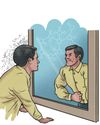Intentar ORO - Gratis
URBAN DISCOMFORT
Down To Earth
|May 01, 2024
Poorly planned, heat-trapping infrastructure, along with dwindling natural spaces, turn up the temperatures in major Indian cities
-

IN A warming world, urbanisation has a profound impact on heat. As a city's population grows, infrastructure needs to be developed to cater to its requirements.
Cities contribute more than two-thirds of global carbon dioxide emissions, according the UN Environment Programme. However, their environmental impact goes beyond emissions. As a city grows, the way buildings, roads and railways are laid out; the density, height and size of buildings, and the materials used; the amount of green spaces and water bodies; and level of human activities such as use of vehicles and airconditioners together determine how much heat is retained in the immediate area.
When released, this heat raises the temperatures of the nearby atmosphere. As the grey infrastructure gets denser and more concentrated, it erodes the natural spaces that act as heat sinks and keep the environment cool (see 'Influencing factors'). If left unchecked, such development could create an urban heat island effect, with cities recording high temperatures that can adversely impact the health of people, and also potentially be fatal.
To analyse the status of urban heat islands in the country and establish the ongoing heat burden that is a result of their development, Delhi-based think tank Centre for Science and Environment (CSE) conducted a study in nine cities-Delhi, Jaipur, Kolkata, Nagpur, Pune, Ahmedabad, Hyderabad, Chennai and Bhubaneswar.
These cities, which are of different sizes and are located in different climatic zones, show that the problem of heat is not restricted to a specific kind of climate or geography.
Esta historia es de la edición May 01, 2024 de Down To Earth.
Suscríbete a Magzter GOLD para acceder a miles de historias premium seleccionadas y a más de 9000 revistas y periódicos.
¿Ya eres suscriptor? Iniciar sesión
MÁS HISTORIAS DE Down To Earth
Down To Earth
Himalayan states reel even as monsoon ends
EVEN AS the 2025 southwest monsoon began withdrawing from western Rajasthan on September 14-three days ahead of its normal date and the earliest in the past 10 years-the Himalayan states continue to be battered by heavy rainfall and flooding.
1 min
October 01, 2025
Down To Earth
A generation in protest
ON SEPTEMBER 1, there were 30 anti-government protests globally, according to Carnegie's global protest tracker. In the 12 months prior to this, the world witnessed 159 anti-government protests in 71 countries. What defines these protests is an overwhelming participation from youth. “The proportion of people willing to participate in demonstrations has increased to its highest levels since the 1990s, and the number of protests has also risen in this period,” says a Unicef report. Massive protests have caused change in regimes in Nepal, Bangladesh and Sri Lanka.
2 mins
October 01, 2025

Down To Earth
EU misses deadline to set new targets
EU'S CLIMATE ministers on September 18 confirmed that the bloc will miss a global deadline to set new emissions-cutting targets in time for a meeting of the UN General Assembly (UNGA) at the end of the month.
1 min
October 01, 2025

Down To Earth
The catalyst within
HORMONES NOT ONLY SHAPE ONE'S HEALTH, BUT HAVE LIKELY IMPACTED GLOBAL EVENTS
4 mins
October 01, 2025

Down To Earth
SIP AND UNWIND
Ashwagandha, one of the most revered herbs in ayurvedic medicine, has found its place in contemporary wellness recipes
3 mins
October 01, 2025

Down To Earth
Delhi court ban on Sci-Hub is bad news
Researchers will be hit by the loss of the free science website while big publishers are milking India on subscriptions
4 mins
October 01, 2025
Down To Earth
Don't push limits
WE CANNOT develop the Himalayas as if they were the plains, or a colony in South Delhi. This must be the lesson from this year's season of despair. The world's youngest mountain range, made of moraine, mud and rock, has been battered by rain. It has literally come crashing down, bringing with it homes, schools, fields, roads, bridges and much of the expensive infrastructure built by governments. The cost of this destruction—besides the tragic and irreplaceable loss of human lives—will be massive. Years of public and private investment have been lost.
3 mins
October 01, 2025

Down To Earth
'A separate Local Government Service Commission can be set up to recruit panchayat employees'
The 73rd Amendment to the Constitution of India calls upon states to enact laws that enable panchayats to function as local governments. To assess the extent of this devolution of power, the Union Ministry of Panchayati Raj has studied and ranked the states since 2004.
4 mins
October 01, 2025

Down To Earth
GLOBAL SOUTH REIMAGINED
In an increasingly fractured world marked by unilateralism and weakened climate cooperation, civil society must elevate Global South cohesion as a top climate agenda
4 mins
October 01, 2025

Down To Earth
A mandatory requirement
Assessment of a river's sand replenishment is now a legal requirement for obtaining environmental clearance to mine the resource
3 mins
October 01, 2025
Listen
Translate
Change font size
